
Types of Cooking Oil
Shop All Cooking Oils
When figuring out which plant-based cooking oil or animal-based cooking fat you need to cook your foods with, you will need to look at the oil's smoke point to determine if it can handle the cooking method your dish requires. A cooking oil's smoke point indicates the temperature at which an oil starts to smoke. For instance, deep frying requires cooking oil with a higher smoke point than sauteing. The oil's taste, aroma, and how it is processed are also important to consider. Take a look at these 15 common cooking oils to determine which oil is the best option for your next dish.
1. Butter
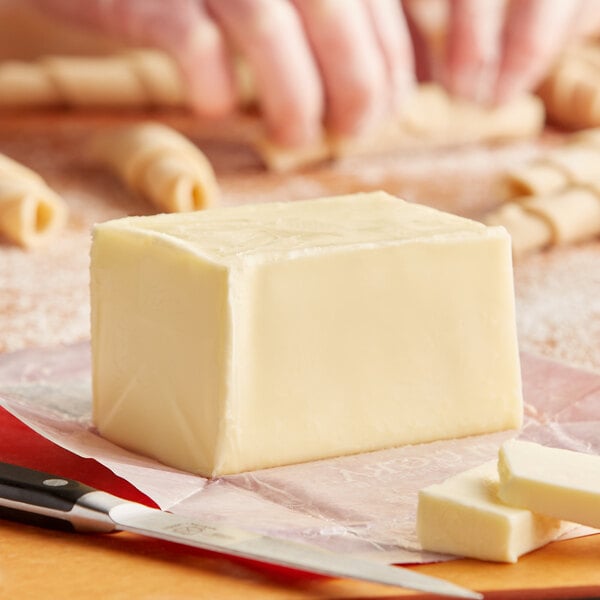
One of the most versatile cooking fats out there is butter. Its rich, creamy taste can elevate the flavor of meat or fish or richen the texture of sauces and baked goods. Butter is a dairy product made by churning milk or cream until the fat separates from the buttermilk. It is not suitable for deep-frying and other high-heat applications and instead works better in non-heated and low-heat applications.
While unsalted butter is undoubtedly the best type of butter for baking, there is no best kind of butter for cooking. Each butter type holds different flavors, salt levels, and smoke points, and oftentimes the choice comes down to taste preference.
Butter Smoke Point: 300 to 350 degrees Fahrenheit
Butter Fat Content: Butter contains approximately 12 grams of fat, with the majority being saturated fat
Butter Uses: Baking, sauteing, roasting, pan-frying
2. Coconut Oil
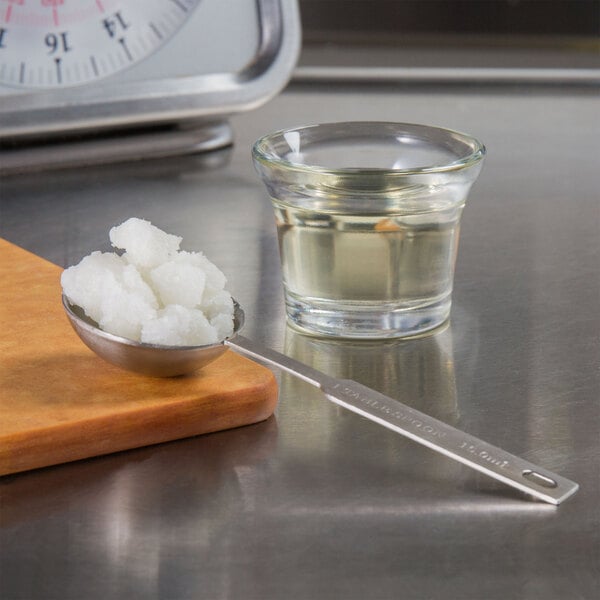
Due to its high amount of saturated fat, coconut oil is solid at room temperature and melts to a clear liquid when heated. Pure coconut oil has a true coconut taste and aroma, whereas refined coconut oil is odorless with a neutral flavor. Refined coconut oil also has a higher smoke point and is often used as a healthier deep-frying alternative to canola oil and a dairy-free baking substitute for butter.
Coconut oil is also commonly used to create health and beauty products, such as soaps and lotions.
Coconut Oil Smoke Point: 350 to 400 degrees Fahrenheit
Coconut Oil Fat Content: Coconut oil contains approximately 14 grams of fat, with the majority being saturated fat
Coconut Oil Uses: Baking, sauteing, frying, roasting, and making popcorn
3. Ghee
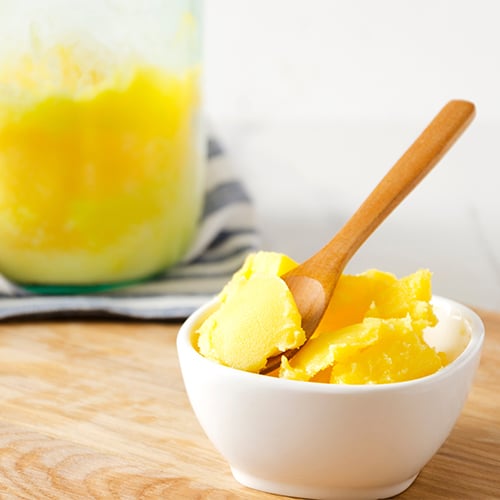
Ghee is a type of clarified butter that is heated to separate the butterfat from the water and milk solids. This clarification process increases the smoke point of ghee, making it suitable for higher-heat cooking, including deep-frying. The process also removes casein and lactose from the butter, making ghee suitable for lactose-free diets.
Ghee has a nuttier, more robust taste than butter. It holds up well to strong spices and spice blends and is a popular cooking medium in Indian and Thai cuisine. While ghee can be substituted for butter in cooking and baking recipes, it is more expensive, which is why it is not as commonly used.
Ghee Smoke Point: 450 degrees Fahrenheit
Ghee Fat Content: Ghee contains approximately 15 grams of fat, with the majority being saturated fat
Ghee Uses: Frying, sauteing, roasting
4. Olive Oil
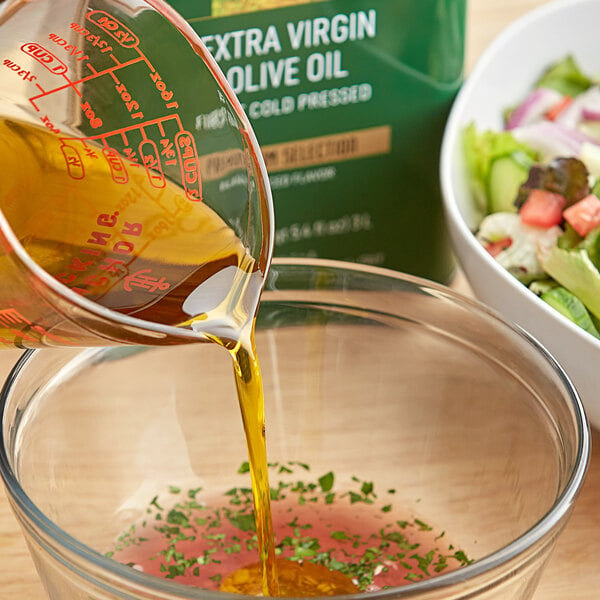
A staple in Italian cuisine, olive oil is made with various olive types and can range from a light yellow color with a mild flavor to a slightly green color with a complex, peppery flavor. There are a few olive oil types, with the two most popular being regular olive oil and extra virgin olive oil.
Regular olive oil is processed and refined, giving it a lighter color, milder flavor, and a higher smoke point. Extra virgin olive oil has a lower smoke point and is often used as a salad oil, finishing oil, and in light-heat applications so that its complex flavor can be appreciated. Due to its high level of polyphenols compounds, which have antioxidant properties and help the oil resist oxidation when heated, extra virgin olive oil is one of the most stable oils for cooking.
Olive Oil Smoke Point: 350 to 400 degrees Fahrenheit
Olive Oil Uses: Sauteing, pan-frying, baking, roasting, dressings, dips, marinades
5. Lard
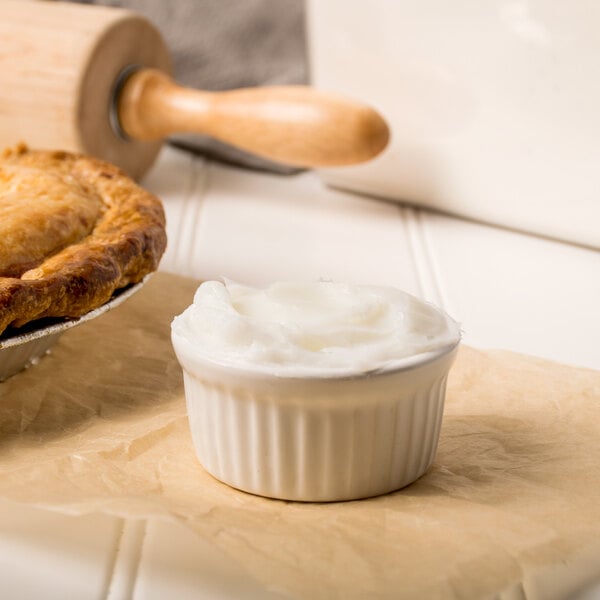
Made from rendered pork fat, cooking lard is solid at room temperature and melts to a liquid when heated. It has a neutral taste that makes it ideal for use in high-heat applications. Lard is used in many baked goods, and many bakers proclaim that it produces the flakiest pie crust.
Deep-frying with lard allows you to achieve crispier fried foods. For those looking to make the perfect southern-style fried chicken, lard is the best cooking fat for frying chicken to an ideal crispness.
Lard Smoke Point: 370 degrees Fahrenheit
Lard Fat Content: Lard contains approximately 12 grams of fat, with the majority being monounsaturated fat
Lard Uses: Frying, sauteing, grilling, roasting, baking
6. Canola Oil
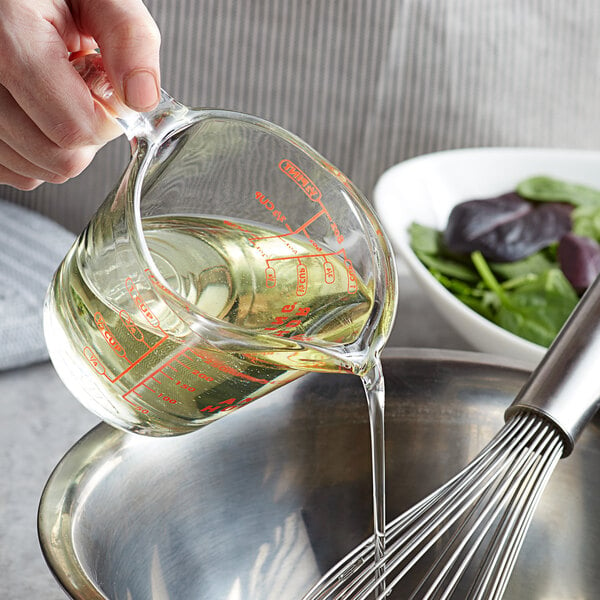
Thanks to its neutral flavor, affordable price, and high smoke point, canola oil is one of the most versatile cooking oils used in kitchens. Its high heat tolerance is a popular option for deep-frying and grilling. It can also be used as a substitute for butter in recipes and is a common ingredient for making salad dressings, sauces, and marinades.
Known for its low amount of unsaturated fat and high amount of healthy omega-3 and omega-6 fatty acids, canola oil contains the least saturated fat of all cooking oils.
Canola Oil Smoke Point: 400 degrees Fahrenheit
Canola Oil Fat Content: Canola oil contains approximately 14 grams of fat, with the majority being monounsaturated fat
Canola Oil Uses: Frying, sauteing, baking, grilling, sauces, and dressings
7. Sesame Oil

A staple in Asian cuisine, sesame oil is made from raw or toasted sesame seeds. Light, untoasted sesame oil has a golden color and a slightly nutty, mild taste whereas toasted sesame oil has a deeper, savory flavor and dark color. Typically, the darker the toasted sesame oil, the stronger the flavor. Since sesame oil's flavor is so potent, a little goes a long way when cooking.
Untoasted sesame oil's high smoke point is suitable for high-heat applications and is commonly used to make stir-fries and to saute meats and vegetables. Toasted sesame oil's bold flavor makes it great for adding to sauces and dressings.
Sesame Oil Smoke Point: 420 degrees Fahrenheit
Sesame Oil Fat Content: Sesame oil contains approximately 14 grams of fat, with the majority being polyunsaturated fat
Sesame Oil Uses: Sauteing, frying, searing, dressings, marinades
8. Grapeseed Oil
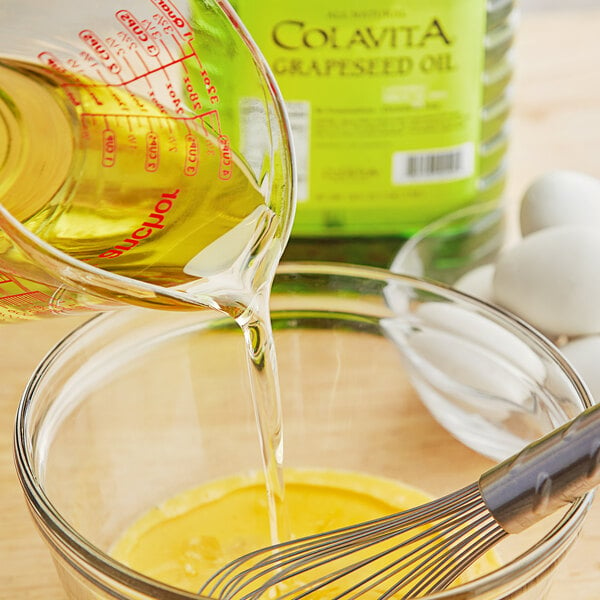
A natural by-product of wine-making, grapeseed oil is made from pressing the grape seeds left over from pressing grapes for wine. Grapeseed oil has a clean, light taste and offers a more cost-effective alternative to olive oil in cooking and baking applications. Its high smoke point and neutral flavor make it one of the most versatile oils in the kitchen, and it is a good candidate for high-heat cooking.
Grapeseed oil is rich in vitamin E and is also commonly used to create skincare and beauty products.
Grapeseed Oil Smoke Point: 400 to 420 degrees Fahrenheit
Grapeseed Oil Fat Content: Grapeseed oil contains approximately 14 grams of fat, with the majority being polyunsaturated fat
Grapeseed Oil Uses: Sauteing, baking, roasting, dressings
9. Shortening
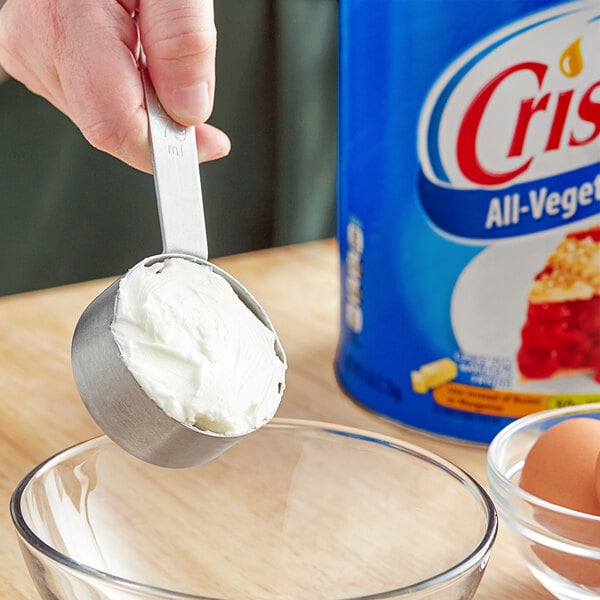
Made from vegetable oils, shortening is an affordable, shelf-stable, and plant-based alternative to butter and lard. Vegetable shortening that has been fully hydrogenated to make it solid at room temperature is best for baking applications. Frying shortenings typically come in a liquid format and are specially formulated to perform well in high-heat applications.
Shortening is a popular ingredient for making frostings, and it can be used as a 1:1 substitute for lard in baked goods. While its neutral flavor won't impart the same richness that lard delivers, shortening is 100% fat (lard is around 80 percent% comparatively) and will provide a tender texture in baked goods.
Shortening Smoke Point: 360 to 450 degrees Fahrenheit
Shortening Fat Content: Shortening contains approximately 13 grams of fat, with the majority being polyunsaturated fat
Shortening Uses: Sauteing, frying, frostings, baking
10. Peanut Oil
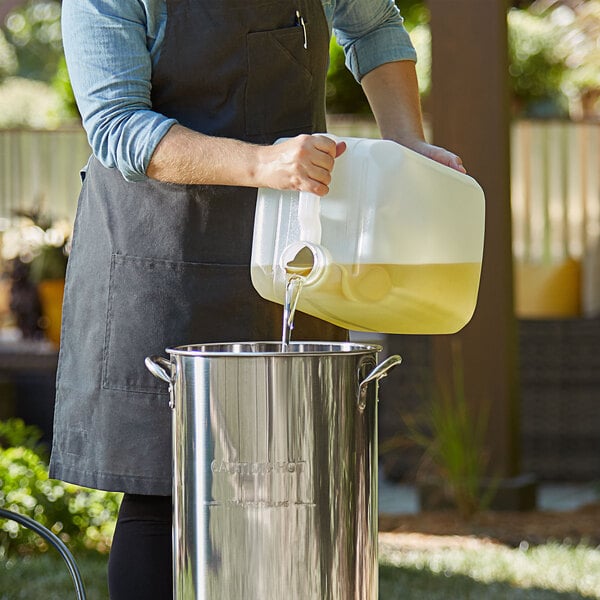
Made by pressing raw peanuts, refined peanut oil delivers a light color and neutral flavor. Its high smoke point makes it a popular option for deep frying foods and it is one of the best oils for deep frying turkey. Peanut oil does not tend to pick up the smells or tastes of the items it has fried, which makes it easy to strain and reuse.
Although it is made from peanuts, not all peanut oil is considered an allergen. Highly refined peanut oil is considered safe for many people with peanut allergies because the protein that causes reactions has been removed. Unrefined peanut oils contain peanut protein that may cause allergic reactions and should not be eaten by those with peanut allergies.
Peanut Oil Smoke Point: 425 degrees Fahrenheit
Peanut Oil Fat Content: Peanut oil contains approximately 14 grams of fat, with the majority being monounsaturated fat
Peanut Oil Uses: Frying, grilling, roasting, baking
11. Avocado Oil
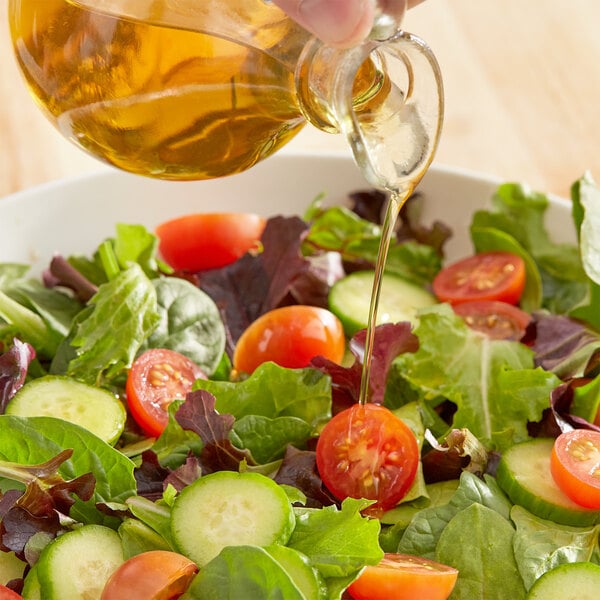
Made from the pulp of avocados, avocado oil has a light green color and buttery-rich, slightly grassy flavor that works well as a finishing oil. Refined avocado oil has one of the highest smoke points of all cooking oils and is excellent for high-heat applications, such as searing steaks in a cast iron pan.
Because it contains high amounts of monounsaturated fat, avocado oil is one of the most stable cooking oils and is less prone to oxidation when exposed to heat.
Avocado Oil Smoke Point: 520 degrees Fahrenheit
Avocado Oil Smoke Point: Avocado oil contains approximately 14 grams of fat, with the majority being monounsaturated fat
Avocado Oil Uses: Frying, searing, sauteing, roasting, grilling, dressings
12. Vegetable Oil

While any oil derived from plants is considered vegetable oil, bottles of cooking oil that are labeled "vegetable oil" are typically 100% soybean oil. You may also find vegetable oil that is a blend of neutral oils, such as soybean, sunflower, and corn oil. However, these blends are not considered "pure" vegetable oil. Vegetable oil is refined to remove any impurities, giving it a light color and neutral flavor.
Vegetable oil is an excellent all-purpose oil for non-heated and heated applications. It is as great for making marinades and dressings as it is for cooking and baking, and it is one of the most popular oils for deep frying.
Vegetable Oil Smoke Point: 400 to 450 degrees Fahrenheit
Vegetable Oil Fat Content: Vegetable oil contains approximately 14 grams of fat, with the majority being polyunsaturated fat
Vegetable Oil Uses: Searing, sauteing, frying, baking, roasting, grilling, dressings
13. Sunflower Oil
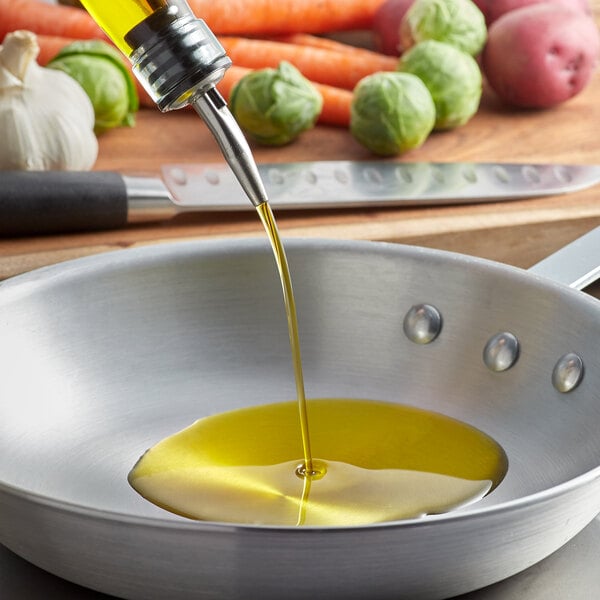
Made from milling sunflower seeds, sunflower oil is an affordable all-purpose oil. It boasts a high smoke point, which makes it great for deep-frying, as well as a light color and mild taste that makes it great in sauces, mayonnaise, and salad dressings.
There are three types of sunflower oil: high oleic, mid oleic, and linoleic sunflower oil. High oleic sunflower oil contains the highest percentage of polyunsaturated fats out of the three types and is the best option for cooking at high temperatures.
Sunflower Oil Smoke Point: 450 degrees Fahrenheit
Sunflower Oil Fat Content: Sunflower oil contains approximately 14 grams of fat, with the majority being polyunsaturated fat
Sunflower Oil Uses: Frying, sauteing, roasting, dressings, marinades
14. Corn Oil
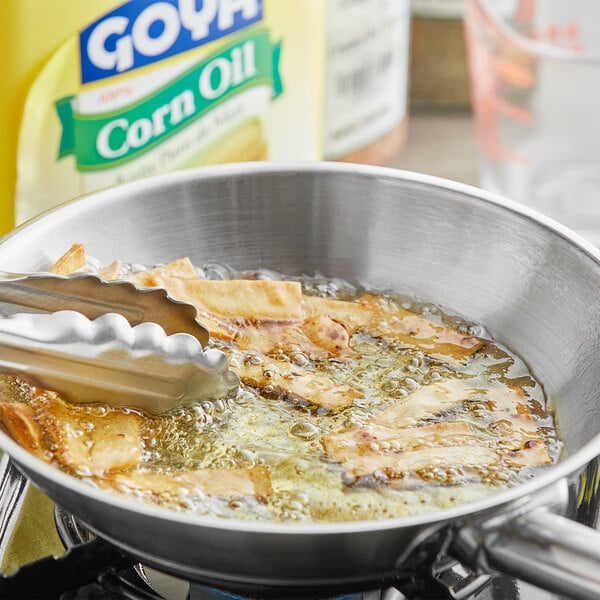
Also known as maize oil, corn oil is an affordable all-purpose oil that is extracted from the germ of corn. It boasts a high smoke point and is commonly used in Hispanic cuisine to deep-fry tortilla chips and other foods.
Corn oil can be used as a salad oil to create dressings, mayonnaise, and marinades. It is also commonly hydrogenized to make margarine.
Corn Oil Smoke Point: 450 degrees Fahrenheit
Corn Oil Fat Content: Sunflower oil contains approximately 14 grams of fat, with the majority being polyunsaturated fat
Corn Oil Uses: Frying, sauteing, roasting, dressings, marinades
15. Cottonseed Oil

Extracted from cottonseed, cottonseed oil is a refined, multi-purpose oil with a clean, neutral taste. It is extremely versatile in application and can be used as a salad oil in mayonnaise, dressings, sauces, and marinades or as a cooking oil for frying.
Cottonseed oil is the best oil for beignets and is also a popular choice for chip production. It is also commonly hydrogenized to make margarine and shortening for icings and baking goods.
Cottonseed Oil Smoke Point: 450 degrees Fahrenheit
Cottonseed Oil Fat Content: Cottonseed oil contains approximately 14 grams of fat, with the majority being polyunsaturated fat
Cottonseed Oil Uses: Frying, baking sauteing, roasting, dressings
In addition to smoke point, there are two other factors to consider when choosing a cooking oil: the oil's fat content and if it is refined or unrefined. Knowing these key elements will help you choose the best application for each of your cooking oils.
Oil Fat Content
Cooking oils contain different ratios of three fats: saturated, monounsaturated, and polyunsaturated. Monounsaturated and polyunsaturated fats are considered healthier than saturated fats, so if you are looking for a healthy cooking oil, it can be helpful to look at a cooking oil's label to determine its fat content.
The higher the monounsaturated or saturated fat content is in the oil, the more stable it is when heated. If an oil's fat content is mainly polyunsaturated fat, it is more vulnerable to oxidative damage at high temperatures. Therefore, looking at an oil's fat content in addition to its smoke point will help you decide which oil is best for your high-heat cooking.
Unrefined vs Refined Oil
Refined oil is heated and filtered to remove any visual flaws, resulting in a lighter color with a more neutral flavor and odor. Refined oils, such as canola oil, vegetable oil, and peanut oil, are often used for deep-frying because of their high smoke points and zero flavor transfer.
Unrefined oils, also known as cold-pressed or expeller-pressed oil, are minimally processed, resulting in more nutrient-rich oils with a bolder flavor and deeper flavor. They usually feature a lower smoke point and are best used in unheated applications or with low-heat cooking.
Read on to learn the answers to some frequently asked questions about cooking oil.
What Is Neutral Oil?
Any cooking oil with little to no flavor or odor that does not alter the taste of the foods it is cooking is considered a neutral oil. Types of neutral oils include vegetable oil, canola oil, sunflower oil, corn oil, and grapeseed oil.
What Is Clear Frying Oil?
Clear frying oil, or clear liquid shortening, is made from soybean oil and has a high smoke point of 450 degrees Fahrenheit, making it great for deep frying. It is used in cooking and baking recipes that call for melted shortening and is an inexpensive alternative to liquid butter and margarine.
What Is a Substitute for Peanut Oil?
Grapeseed oil is considered the best substitute for peanut oil due to its neutral flavor, affordable price, and similar smoke point of 420 degrees Fahrenheit.
Can You Substitute Vegetable Oil for Canola Oil?
If you don't have canola oil on hand, vegetable oil is an excellent substitute. Like canola oil, vegetable oil is a neutral-flavored oil with a high smoke point, and it can be a 1:1 substitute in your recipes.
Does Cooking Oil Expire?
Like any food, cooking oil can expire or spoil if stored incorrectly. Cooking oil can become rancid if subjected to too much light, heat, or oxygen, so it is imperative to properly store your cooking oil in a dark, dry place away from any heat sources.
In general, cooking oils last around two years unopened and six months opened when stored correctly.
Back to TopRelated Resources

How to Clean a Deep Fryer
Choosing the right oil for your fryer is only part of what makes fried food delicious. Keeping your deep fryer clean and your oil fresh can have a huge impact on the flavor of your appetizers and entrees. We'll guide you through the step-by-step process of cleaning a deep fryer, including draining and filtering the oil, boiling out the fryer, and disposing of spent grease. By following these simple steps, you can keep your deep fryer in optimal condition and continue to serve delicious fried dishes to your customers. Shop All Fryer Cleaner Click on any of the links below to skip to the fryer maintenance process you need: How to Boil Out a Deep Fryer How to Filter Fryer Oil How to Dispose of Fryer Oil How to Boil Out a Deep Fryer Boiling out

How to Fry the Perfect French Fries
The secret to achieving the perfect french fries is to fry them twice. Eliminating a majority of your potatoes' moisture before the final frying is key to yielding a crispy, golden brown product. To help you improve your restaurant's fries, we share the best potatoes for frying, how to choose the best oil , potato preparation tips, and how to season your french fries for the best flavor. Shop All Fryer Oil and Cooking Oil The Best Potatoes for French Fries The following varieties are some of the best types of potatoes for making french fries: Russet Katahdin Norkotah Kennebec Choose a Starchy Potato with Low Moisture The best frying potatoes have a high starch content and low moisture content. Starchy, low-moisture potatoes will yield the c
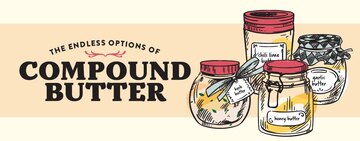
What Is Compound Butter?
Compound butter, or finishing butter, is a type of butter that is mixed with herbs, spice blends , and other ingredients that give it a savory or sweet flavor. The term compound butter encompasses countless recipes and flavor profiles. From garnishing steak with a dollop of savory garlic herbed compound butter to spreading sweet maple compound butter on muffins, the only limit is your chef's imagination. Click below to learn more about compound butter: How to Make Compound Butter Compound Butter Recipe How to Use Compound Butter? What Is Maitre D'Butter? Compound Butter FAQ How to Make Compound Butter Compound butter adds complexity to your dishes, but making compound butter is simple. Compound butter is usually served in chilled rounds but
- Topics 1342
- Industrial 55
- Troubleshooting Guides 21
- Restaurant Management 128
- Bar Management 55
- Catering Tips 35
- Bakery Management 41
- Food Trucks & Concessions 49
- Advertising & Marketing 37
- Eco-Friendly Tips 11
- Facility Layout & Design 41
- Coffee Shop Tips 27
- Installation & Maintenance 51
- Janitorial & Pest Control 29
- Safety & Sanitation 88
- Startup Tips 104
- Menu Design 10
- Kitchen & Cooking Tips 81
- Hospitality Management 23
- Pizza & Sandwich Shop Tips 35
- Smallwares 37
- Food Prep 88
- Tabletop Items 17
- Disposables 22
- Calculators & Tools 6
- Consumables 52
- Warewashing & Laundry 18
- Cooking Equipment 90
- Food Storage & Refrigeration 51
- Beverage Equipment 34
- Office Supplies 6
- Resource Type
- In-Depth Articles270
- Buying Guides296
- How-Tos93
- Product Reviews77


